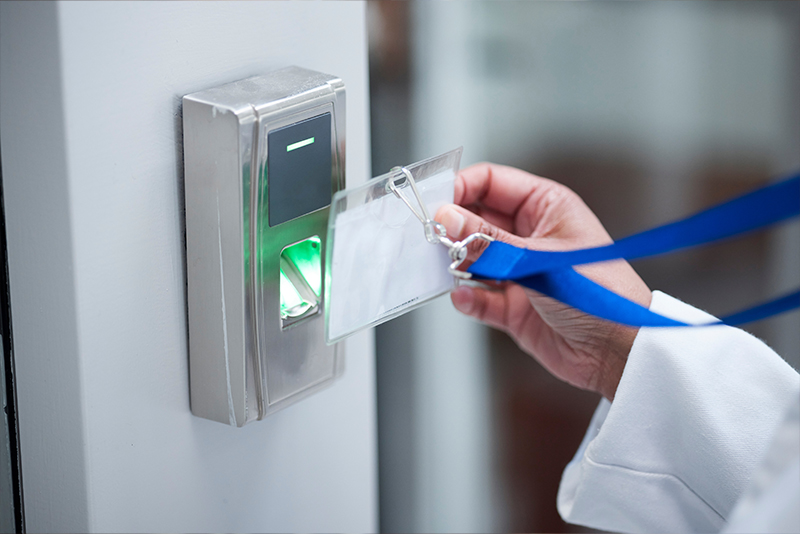Enhancing Hospital Security and Efficiency: Integrating Access Control Systems with Other Security Measures

In the ever-evolving landscape of healthcare, ensuring the safety and security of patients, staff, and sensitive medical information is paramount. Hospitals are bustling environments with numerous entry points and potential security vulnerabilities. Access control systems serve as a fundamental component of hospital security, but their effectiveness can be significantly enhanced when integrated with other security measures. This blog explores the benefits, challenges, and best practices of integrating access control systems with other security measures in hospitals.
Access Control Systems in Hospitals
Access control systems are sophisticated technologies designed to manage and monitor access to various areas within a hospital. These systems utilize credentials such as keycards, biometrics, or PIN codes to grant or restrict access based on predefined permissions. By implementing access control systems, hospitals can regulate entry to sensitive areas such as patient rooms, medication storage areas, and administrative offices, thus safeguarding both physical assets and patient privacy.
Other Security Measures in Hospitals
In addition to access control systems, hospitals employ a range of security measures to mitigate risks and maintain a safe environment. Surveillance systems equipped with CCTV cameras provide real-time monitoring of key areas, deterring potential threats and facilitating incident investigation. Security personnel conduct patrols to ensure compliance with security protocols and respond promptly to emergencies. Alarm systems and panic buttons are strategically placed throughout the facility to alert staff in the event of a security breach or medical emergency. Furthermore, visitor management protocols help control access to the premises and track individuals entering and exiting the facility.
Challenges in Hospital Security
Despite the presence of various security measures, hospitals face unique challenges in ensuring comprehensive security. Identifying vulnerabilities in the existing security infrastructure and addressing them effectively requires careful consideration and strategic planning. Moreover, the dynamic nature of healthcare environments, coupled with the increasing sophistication of security threats, necessitates a proactive approach to security management.
Benefits of Integrating Access Control Systems with Other Security Measures
Integrating access control systems with other security measures offers several notable benefits. By combining access control with surveillance systems and alarm systems, hospitals can enhance their ability to detect and respond to security breaches promptly. Streamlining workflows through system integration improves operational efficiency and reduces the risk of human error. Moreover, the integration of security technologies facilitates a centralized approach to security management, enabling comprehensive monitoring and control of security measures across the facility.
Integration of Access Control and Infant Protection Systems in Maternity Wards
One critical area where the integration of access control systems can significantly enhance safety is in maternity wards through the incorporation of infant protection systems. These specialized systems utilize wearable tags attached to newborns and sensors installed throughout the maternity ward to monitor their movements and prevent unauthorized removal from the designated area. By integrating access control systems with infant protection systems, hospitals can ensure that only authorized personnel have access to the maternity ward, reducing the risk of infant abduction and enhancing overall safety for newborns and their families.
In the event a breach should occur, infant protection systems that are integrated with CCTV cameras and access control systems can assist hospital security with quickly locating the abductor and locking down the facility.
Best Practices for Integrating Access Control Systems with Other Security Measures:
To maximize the effectiveness of integrated security solutions, hospitals should adhere to best practices in system integration. Conducting thorough security assessments and risk analysis helps identify vulnerabilities and prioritize security measures. When selecting security technologies, compatibility and scalability should be key considerations to ensure seamless integration and future-proofing. Establishing clear policies and procedures for system integration and providing ongoing training to staff on security protocols and emergency response are essential for maintaining a secure environment.
Future Trends in Hospital Security Integration
Looking ahead, advancements in access control technology, such as the integration of artificial intelligence and predictive analytics, hold promise for enhancing hospital security. These technologies can enable proactive threat detection and risk mitigation, empowering hospitals to stay ahead of evolving security threats. Additionally, the importance of data privacy and compliance considerations will continue to shape the future of hospital security integration, as healthcare organizations strive to safeguard patient information in accordance with regulatory requirements.
Integrating access control systems with other security measures is essential for enhancing hospital security and efficiency in today's dynamic healthcare environment. By leveraging the strengths of various security technologies and adopting best practices in system integration, hospitals can create a safer and more secure environment for patients, staff, and visitors alike. As technology continues to evolve and security threats evolve, hospitals must remain vigilant and proactive in their approach to security management.
SUBSCRIBE TO OUR NEWSLETTER!
RECENT POSTS
- Understanding Role-Based Access Control in Physical Security
- How Hospitals Prevent Infant Switching
- Top 10 Security Challenges Facing Hospitals and How to Solve Them
- Enhancing Hospital Security and Efficiency: Integrating Access Control Systems with Other Security Measures
- The Link Between Visual Impairments and Alzheimer’s Disease: Insights from UCSF Study
- Network-Dependent Patient Elopement Systems: Unveiling Risks and Vulnerabilities in Healthcare Security
- 5 Common Causes of Patient Elopement
- Ensuring Newborn Safety: Modern Hospital Security Measures
- Hospital Bag Checklist
- Everything You Need to Know About Infant Hospital ID Bracelets
RECENT POSTS
- Understanding Role-Based Access Control in Physical Security
- How Hospitals Prevent Infant Switching
- Top 10 Security Challenges Facing Hospitals and How to Solve Them
- Enhancing Hospital Security and Efficiency: Integrating Access Control Systems with Other Security Measures
- The Link Between Visual Impairments and Alzheimer’s Disease: Insights from UCSF Study
- Network-Dependent Patient Elopement Systems: Unveiling Risks and Vulnerabilities in Healthcare Security
- 5 Common Causes of Patient Elopement
- Ensuring Newborn Safety: Modern Hospital Security Measures
- Hospital Bag Checklist
- Everything You Need to Know About Infant Hospital ID Bracelets
